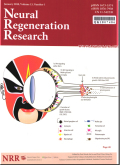摘要The pathophysiology of amyotrophic lateral sclerosis (ALS) is particularly challenging due to the heteroge-neity of its clinical presentation and the diversity of cellular, molecular and genetic peculiarities involved. Molecular insights unveiled several novel genetic factors to be inherent in both familial and sporadic dis-ease entities, whose characterizations in terms of phenotype prediction, pathophysiological impact and putative prognostic value are a topic of current researches. However, apart from genetically well-defined high-confidence and other susceptibility loci, the role of DNA damage and repair strategies of the genome as a whole, either elicited as a direct consequence of the underlying genetic mutation or seen as an autono-mous parameter, in the initiation and progression of ALS, and the different cues involved in either process are still incompletely understood. This mini review summarizes current knowledge on DNA alterations and counteracting DNA repair strategies in ALS pathology and discusses the putative role of unconventional DNA entities including transposable elements and extrachromosomal circular DNA in the disease process. Focus is set on SOD1-related pathophysiology, with extension to FUS, TDP-43 and C9ORF72 mutations. Advancing our knowledge in the field will contribute to an improved understanding of this relentless dis-ease, for which therapeutic options others than symptomatic approaches are almost unavailable.
更多相关知识
- 浏览55
- 被引1
- 下载16


相似文献
- 中文期刊
- 外文期刊
- 学位论文
- 会议论文



 换一批
换一批 换一批
换一批



